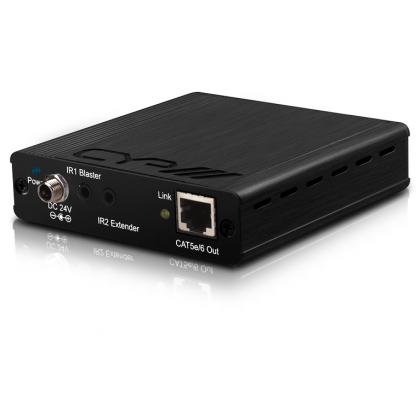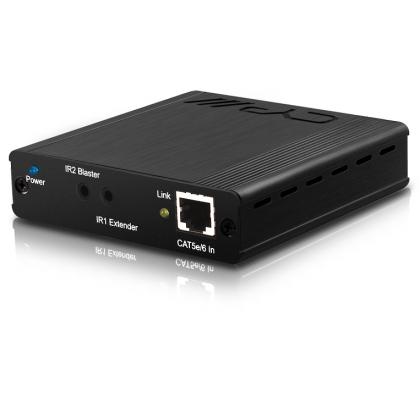What is HDBaseT 5Play?
Cabling for AV systems has grown confusing over the years, as different wires are needed for power, picture signals and internet connectivity. However, the latest AV standard has been designed to include all of these in one simple cable, allowing manufacturers to produce devices which are simpler in both function and design.
 What is HDBaseT?
What is HDBaseT?
Launched in 2010 by the HDBaseT Alliance containing Samsung, LG and Sony, after initially being created by technology developer Valens. It is the convergence of uncompressed HD video, HD audio, 100BaseT Ethernet, various control signals for home automation and 100 watt power for specific devices delivered through a standard CAT5e/6 cable. HDBaseT supports all video sources, including legacy products, and does not add latency.
Using HDBaseT will help to transform a number of different industries including home entertainment, which will become more simple than existing HDMI solutions and will allow high quality signal to be sent a lot further than before through just a single wire. And with millions of homes already equipped with Ethernet Cat cables, much of the infrastructure needed for HDBaseT is already in place.
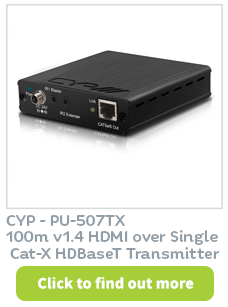 What is HDBaseT 5Play?
What is HDBaseT 5Play?
HDBaseT has been designed to replace the variety of other cables which were previously needed. 5Play is a term which relates to the 5 key signal elements which full HDBaseT is capable of transmitting over a single category 5, 6 or 7 cable. The 5 elements are:
1. Full HD & Ultra HD video – HDBaseT 5Play is capable of transmitting full uncompressed HD and UHD 4k video signals, including 3D signal support and all without latency.
2. Digital Audio – HDBaseT supports transmission of all digital audio formats including Dolby Digital, Dolby True HD and DTS Master Audio.
3. Internet is included through standard 100BaseT Ethernet, which is required for smart TV applications such as Netflix and iPlayer.4. 5Play also transmits a number of key control protocols including infrared and RS-232 to allow for AV system-wide control of multiple sources and display devices.
5. Full HDBaseT will also transmit Power over Cable, allowing power from the transmitter to be sent through the CAT cable to power receivers at the display end of the system, without the need for a local power supply.
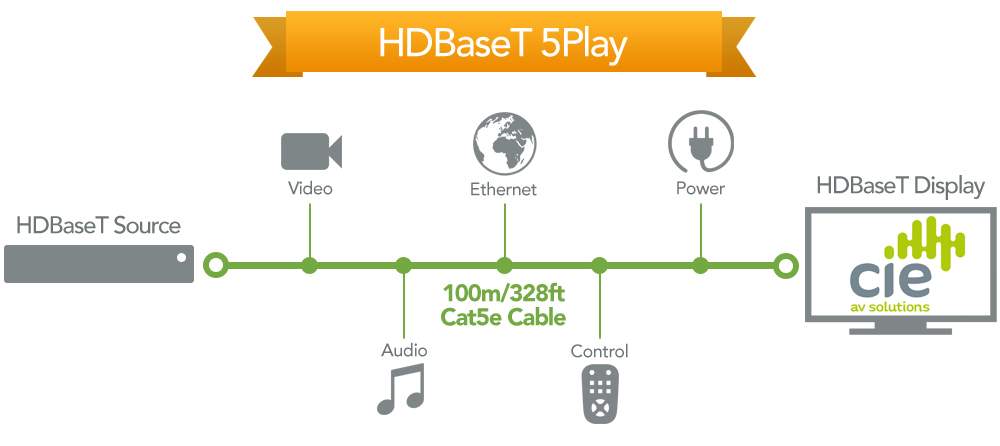
Cabling Tips For HDBaseT Installation
So far the most obvious benefit of HDBaseT is the innovative cabling which it uses, however unless it is installed correctly, you won’t be able to get the most out of your AV system. Here are some tips for ensuring best practice when installing HDBaseT cabling:
Better quality LAN cable for best results and longer distance transmission
HDBaseT is only able to run on Cat5e, Category 6 or 7 Ethernet cable, so if your existing wiring doesn’t meet this specification then you will need to install new Cat cables. The distance you are planning to send the signal will also affect the type of cabling required, so if you are sending it the maximum 100m then Category 6 or 7 is recommended.
Higher grade cable for higher resolutions
Just as the quality of cable needs to be improved for longer runs, the same applies for running higher video resolutions. The higher the resolution, the higher the grade of LAN cable required.
How to future-proof your cable infrastructure
The initial HDBaseT products and cabling are likely to be just the beginning for the technology, with more features added at a later date as new products are released and customer requirements change. By future proofing your system with Cat 6 or 7 cables, you can ensure you are ready for any potential updates by having plenty of bandwidth available.
Terminate with standard Cat5e wiring scheme
HDBaseT uses standard LAN cable infrastructure which means if you are terminating cables, the wiring scheme is no different. Therefore it is best to use the standard 568B wiring scheme.
Will I need shielded or unshielded cables?
If interference is common in your home or office, then you will want shielded cables to protect you from this. However most LAN cables are unshielded which means you must keep them away from power cables, light fixtures or transformers. If you are having problems, terminate your LAN cables with shielded connectors to further reduce interference.
Handle your cable with care!
Cables made by certified manufacturers are designed to be resilient, but this doesn’t mean they are indestructible! Try to handle them with care, and avoid pulling them out of your TV too hard or fast as this can damage some of the connectors inside the cable. The result of damaged cables can be a loss in signal quality.
What are the recommended transmission distances?
All HDBaseT equipment contains a maximum recommended transmission distance. For full HDBaseT 5Play, the distance limit is around 100 metres. For HDBaseT Lite equipment, the maximum distance should be no more than 60 metres.
Apply best practices of standard LAN installations
HDBaseT uses standard LAN cables, so make sure you apply the same best practices you would for a LAN cable installation in every HDBaseT cable installation.
What Is The Difference Between Full HDBaseT & HDBaseT Lite?
We’ve looked at HDBaseT 5Play, which features 5 different signal elements, but there is also another version available called HDBaseT Lite, which as the name suggests, is a ‘diet’ version of full HDBaseT.
It provides fewer functions than the full version, containing 3 of the 5 signal elements. It uses reduced chip set technology that simultaneously transits uncompressed HD video, audio and control signals, although this doesn’t include Ethernet or power over cable.
HDBaseT is only able to transmit over a shorter distance of around 60-70m, compared to the 100m which can be achieved with 5Play version. This is still enough to run it in almost any residential or commercial application and can be beneficial to some people who do not require all the signals, whilst also offering a more cost effective solution.
Want help with AV products or system design?
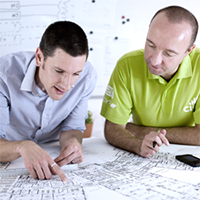 CIE is one of the UK's leading and most innovative professional AV distributors and is a leading provider of AV professional systems and devices.
CIE is one of the UK's leading and most innovative professional AV distributors and is a leading provider of AV professional systems and devices.
With over 50 years experience in supply and system design for many of the UK's largest, high profile audio projects, our AV experts provide a unique level of technical support and customer service.
Call the CIE AV experts now on T. 0115 9770075 or email us at [email protected]
Got a question for the HowToAV Team?
 If you have any further questions then please don’t hesitate to get in touch with our team of AV experts.
If you have any further questions then please don’t hesitate to get in touch with our team of AV experts.
Subscribe to our YouTube channel now at howtoav.tv for all the latest video casts or send us your questions to [email protected]
